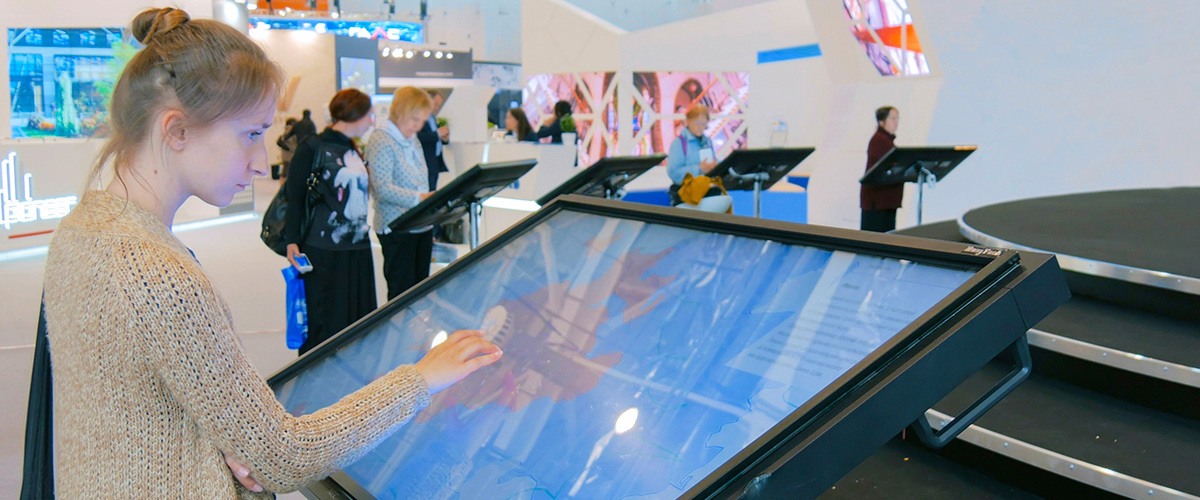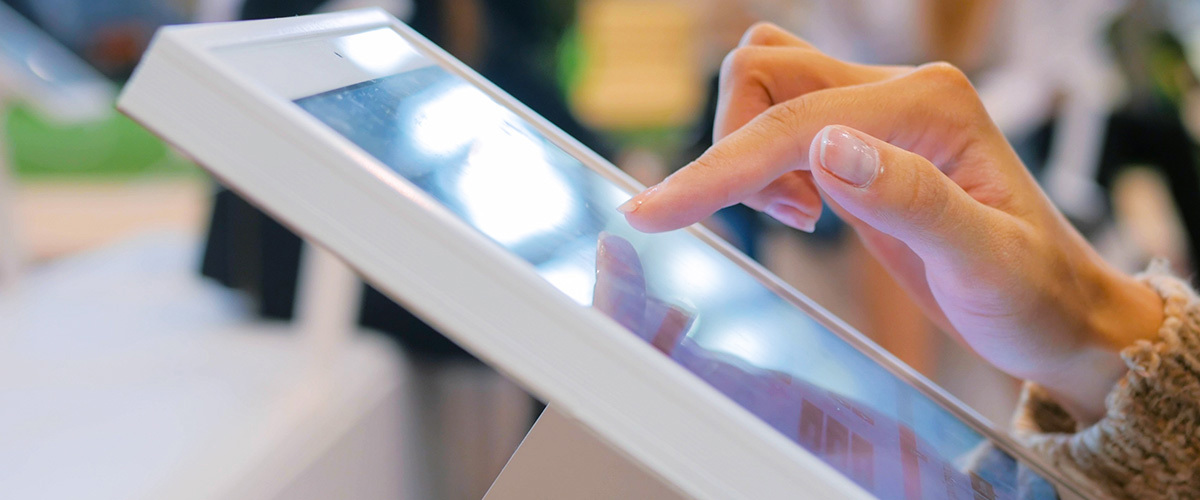Interacting with displays in a post-COVID-19 world
November 23, 2020 / Blog , Displays
While touch technology has existed for decades, it was not until the rise of smartphones that truly responsive touch panels were placed into consumer’s hands.
As a result, people across the globe are now very familiar with touch experiences. Considering more than 3 billion people worldwide use a smartphone, it’s safe to say that billions of people interact with touch interfaces every single day.
This has placed demand on product designers to incorporate the same touch experiences into commercial technology as consumers now expect from their phones. However, recent challenges have transformed the world of touch design potentially forever.

When designing a display product in a post COVID-19 pandemic world, an OEM must consider the obvious challenge - with demand for touchscreen devices comes the added new demand for a more hygienic way to allow end-users to interact with the system.
The good news is that there are a wide range of options available to OEMs, from simply cleaning displays through to implementing antimicrobial touchscreen solutions. These are all becoming increasingly utilised and can help to overcome the challenges typically associated with touch technology in applications such as ATMs, kiosks and other public-facing, touch-enabled point of sale devices.
Modifications To Existing Touch Panels
If a display has already been designed-in, the options are somewhat limited and usually take the form of adjustments done separately from the display, such as cleaning touch panels, using styluses or using gloves. None of these options is without its drawbacks though.
Cleaning Routines – Wiping After Use
All touch panels can be wiped after use easily but this is rarely practical, especially in a public-facing environment. Imagine a point of sale unit in a fast food retail outlet and an operator trying to wipe it after every interaction. This would be too expensive in terms of man hours and cost to maintain.
Stylus Interaction
A stylus can help overcome the need to physically touch the screen with a human hand; however, this simply transfers the risk of contamination to the stylus itself, which would be gripped by multiple hands in a day.
Gloved Interaction
Using gloves on a touch sensor is sometimes possible; however, it would be very difficult to adjust the display’s sensitivity in order to account for all the variable levels of input. For example, the screen would need to be able to function when exposed to different types of gloves. Gloves would also need to be washed and disposed of, which your customer cannot always guarantee.
Latex gloves provided specifically for use with the screen are another alternative but this would require a capacitive touch panel that functions with gloved hands. Also, a disposal station must be sited at the device so that users can place a new pair of gloves on and then dispose of them after interaction. This could dissuade customers from using the screen entirely, eliminating the convenience of touch and robbing your end-customer of a potential sale.
New Designs For Post-COVID-19 Interaction
The current world is more hygiene conscious than ever, with distancing measures in place across the globe to help minimise the risk of transmission. This presents an opportunity for OEMs and product designers to design panels that allow easy interaction but minimise the risk of the spread of bacteria There are many different options available when designing a new, interactive display, and working with a trusted partner such as GTK means that we can help to recommend the right technology for your application.

Antimicrobial Touchscreen Solutions
This technology involves the use of an ultra-thin cover lens, made with antimicrobial glass, which inhibits the growth of bacteria, mould, mildew and algae. This glass uses an ion exchange mechanism to deposit silver ions on the glass of the cover lens. Because bacteria are negatively charged, they are attracted to the positive charge on the glass and, as they come into contact with the glass the cell wall is broken and the bacteria is destroyed
Voice Control
Voice control may be in its relative infancy, but its rapid growth in the consumer sector shows vast potential for the future. The technology depends on clever software that can recognise speech, with the majority of ‘advanced’ voice engines belonging to tech giants such as Google, Microsoft and Amazon. This makes voice control difficult to implement at the moment for industrial and business use, but the technology is continually improving and we would expect to see costs fall and software improve as the technology develops, especially in this new pandemic-aware world.
Gesture Control
Gesture control is a good solution to plan into your next project. It involves the ability to detect motion in front of the screen and interprets swiping gestures into on-screen actions. It can be retrofitted to existing displays and is an emerging technology that is beginning to see more usage – for example Google’s Pixel 4 phone allowed gesture control through a front-mounted radar sensor.
Unfortunately, gesture control is far more limited than touch interaction as it can only interpret simple movements such as up, down, left and right ‘swipes’. It cannot interpret the same level of interaction that touch provides such as pinch and zoom, tapping etc. For that reason, the UI for a gesture controlled panel would need to be simplified and only allow for very specific input.
Currently, GTK are working with our strategic display partner, AV Displays, towards utilising their new gesture control features in displays.
What Type of Panel Should OEMs Be Designing In A Post-Pandemic World?
Proximity detection and gesture controls are the most promising of all technologies in terms of replicating touch experiences without physical interaction, but more development is needed before they can rival touchscreen’s ease-of-use.
While these alternative technologies are still too limited to suggest replacing touch panels outright, product designers have the option to design-in displays that offer features such as antimicrobial cover lenses, gesture control or proximity detection in tandem with traditional touchscreen panels, thereby providing customers with the best of both worlds and an overall more flexible experience in a post COVID-19 world. Touch alternatives and will continue to evolve in an accelerated fashion, with the potential future exciting for manufacturers in every sector.